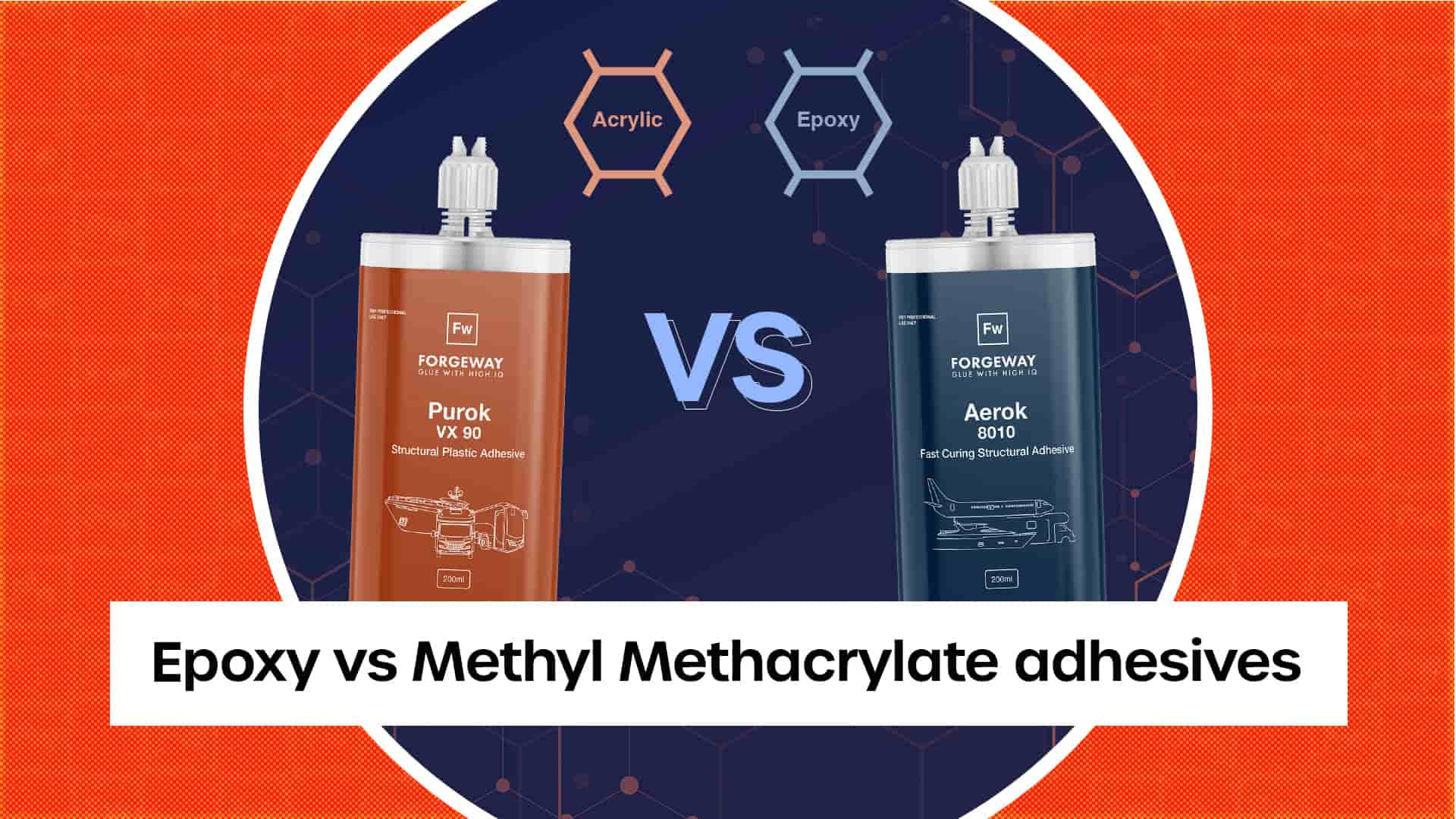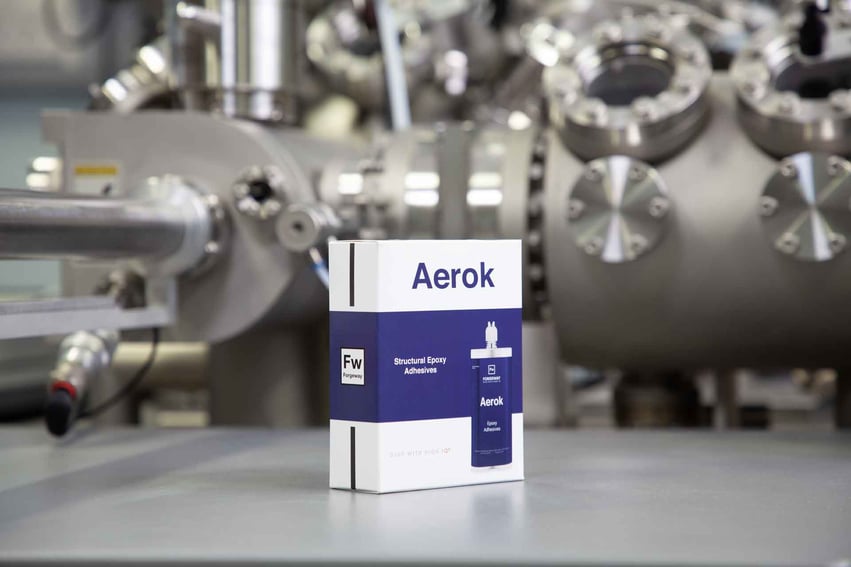Epoxy adhesives vs methyl methacrylate adhesives; Which is right for you

When deciding which structural adhesive is best for your application, you face a range of options. Two adhesives that people regularly compare are epoxy adhesives and methyl methacrylate adhesives (MMAs for short).
Here at Forgeway, we are manufacturers of both epoxy and MMA adhesive products. We know there are pros and cons to both options.
In this article, we will provide an honest and in-depth overview of both adhesive options. We know that there isn’t a universal ‘best adhesive’. But by the end of the article, you will know which is best for you.
Epoxy vs methyl methacrylate adhesives; what’s the difference?
Before discussing the difference between each option, we should explain why they are often compared against each other.
First things first, they are both structural adhesives. This means they become part of the structure to which they are bonding.
They will also both usually come as two-component adhesives, however, you can get one-component variations too.

But the main reason that people so often compare epoxies and MMAs is due to their strength. Both adhesive types can achieve a lap shear strength above 20 MPa which would typically be strong enough to replace a weld.
However, the main difference is that they are made of completely different raw materials.
Epoxy adhesives are made up of epoxy resin and a hardener (usually amine) to make it cure and form the bond.
Methyl methacrylate adhesives instead have an acrylic resin that then mixes with a hardener to cure and form the bond.
Pros and cons of epoxy adhesives
So now you know what the actual difference is between the two, you will want to know what really sets epoxy adhesives apart.
The pros of using epoxy adhesives
To start with, epoxy adhesives can achieve higher strengths than MMAs. Sometimes, adhesive manufacturers can formulate epoxy adhesives to achieve strengths of up to 30 MPa.
Epoxy adhesives also have excellent chemical resistance and superior heat resistance. This means they will be able to retain their strength even when exposed to heat up to 200℃ and a wider range of chemicals than MMAs.

You can use some epoxies as a void filler. These void fillers are formulated to be lightweight and provide high strengths.
The cons of using epoxy adhesives
You will need to extensively prepare the surface to achieve a strong bond. Extensive surface preparation means abrading or applying a primer to the substrate’s surface before applying the adhesive. If you want the epoxy to have a very high strength bond, the surface must have been prepared correctly.
Epoxy adhesives can take a long time to cure. Whilst some formulations of epoxies have a short cure time, the high-strength variations will take a lot longer to cure. It usually takes around one week for a high strength epoxy to reach full strength and some epoxies may require a post-cure process which involves heat ovens.
Pros and cons of methyl methacrylate adhesives
So methyl methacrylates can also achieve high strength, but what sets them apart from epoxy adhesives?
The pros of using methyl methacrylate adhesives
Methyl methacrylate adhesives don’t require surface preparation. You will not need to abrade or extensively prepare the surface before applying MMAs. This is because they can ‘cut through’ contamination and form a strong bond. However, we always advise you to wipe the surface clean before applying any adhesive to ensure you get a strong bond.

MMAs have a very short cure time. Whilst you can adjust this cure time depending on what suits you, most methyl methacrylate adhesives will cure within a few hours. Some formulations even cure within a few minutes.
The main advantage of using methyl methacrylates is their ability to bond to most substrates. Some acrylic adhesives have been specially formulated to bond to low surface energy plastics like polypropylene with very high strengths.
The cons of using methyl methacrylate adhesives
They have inferior chemical and heat resistance. Whilst the chemical and heat resistance is still good, methyl methacrylates can’t withstand exposure to as wide a range of chemicals as epoxies. MMAs aren’t able to withstand the same amount of heat as epoxies.
You won’t be able to achieve as high strengths as epoxies. MMAs will typically never reach strengths of more than 25 Mpa. And this is by no means a low strength, but it still isn’t as high as epoxies.
Epoxy adhesives or methyl methacrylate adhesives; which is best for you?
The first thing you need to do is determine what you want from your adhesive. Factors like cure time, strength, and flexibility are all common deciding points when choosing an adhesive.
As manufacturers of adhesives here at Forgeway, we understand it can be difficult to choose an adhesive. How do you know everything that you need to consider before making a decision on the best adhesive for you?
Our checklist of things to consider will help you determine what you want from the adhesive before deciding which option to go with. You can download the checklist by clicking here.
Nonetheless, you may already know what you want from your adhesive. If you want a high strength adhesive that requires little surface preparation and has a quick cure time, we would always recommend using methyl methacrylates.
Or if you want a higher strength adhesive that has excellent chemical and heat resistance, epoxies would be a better choice for you.
Nevertheless, you may still want help deciding which adhesive is best for you. A member of our team will be able to assess your specific situation and help you come to a decision about which adhesive is best for you.
Thomas is the Content Manager here at Forgeway. Thomas' job is to translate the technical jargon from the ivory tower of academia into easy-to-read content that everyone can understand. Forgeway's mission is to answer every question our customers and prospective clients ask, or are apprehensive to ask.
Topics:



